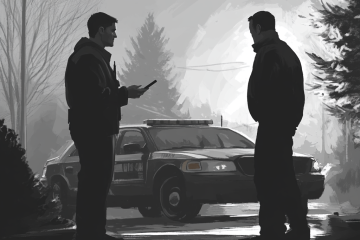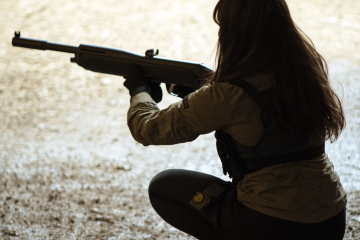The Real Need for Smart Gun-Hiding Tactics
Throughout American history, the right to bear arms has faced challenges during times of crisis. When authorities, driven by fear of unrest or public safety concerns, have moved to control or confiscate weapons, citizens’ access to firearms has sometimes been restricted or revoked entirely. The need for secure, smart ways to hide firearms isn’t just a hypothetical—it’s grounded in real events where ordinary people found themselves unable to access their weapons when they needed them most.
During World War II, for example, Japanese Americans were forced into internment camps, with authorities confiscating their firearms as part of “security” measures. In the 1960s, Black Americans involved in the Civil Rights Movement sometimes faced disarmament as they sought to defend their communities from violence. Meanwhile, the California Mulford Act targeted the Black Panther Party’s legal right to carry firearms in public, leading to the confiscation of guns under new restrictions. And more recently, in the chaotic aftermath of Hurricane Katrina, New Orleans residents were disarmed by authorities going door-to-door—at a time when people arguably needed protection the most.
These examples remind us that government actions can, at times, come into direct conflict with individual rights to self-defense. If you’re preparing for a true society-down situation keeping your essentials hidden and secure can make all the difference. With this context in mind, here are six tried-and-true strategies for securely hiding your firearms, ensuring that you’re prepared and protected if a similar crisis ever arises.
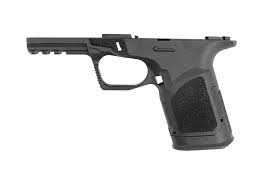
80% lower receiver for building a ghost gun
1. Build a “Ghost Gun”
Building a ghost gun—a firearm assembled from parts using an 80% lower receiver—allows you to own a weapon without a registered serial number (as long as it’s for personal use). This firearm is untraceable and perfectly legal in most places, making it a useful option for times when discretion matters.
Where to Buy: Check out online retailers like 80% Arms, Polymer80, and American Made Tactical for kits and components. They offer everything you need, from lower receivers to upper parts kits and tools to complete your build.
Shipping: Parts ship directly to you without requiring a background check or FFL transfer since an 80% lower receiver isn’t classified as a functioning firearm. Many retailers package these discreetly, prioritizing privacy for customers. It’s a reliable way to keep a low-profile firearm at hand.
2. PVC Pipe Concealment (A Classic Method)
The PVC pipe method has been a go-to for years. Take a length of 12-inch PVC pipe, grab two end caps (one with a screw-top), and seal your firearms and ammo in waterproof bags. Once everything is packed, seal the pipe tightly and bury it somewhere inconspicuous on your property. Cover the area with leaves, rocks, or branches so it blends naturally with the environment. It’s a durable, waterproof solution that keeps your items secure and easily retrievable if needed.
3. Attic and Ceiling Hides (Think Like a Ninja)
Ninjas knew what they were doing by hiding high up and out of sight. For your stash, look to the attic or ceiling for a discreet spot that won’t be on anyone’s radar. Even a small container tucked into an attic corner or secured to a ceiling beam can go unnoticed.
Homes with drop ceilings offer even more options—just slide a concealed compartment into one of the tiles. Few people think to look above eye level, and these “forgotten” spaces are perfect for hiding items you may need quick access to later.
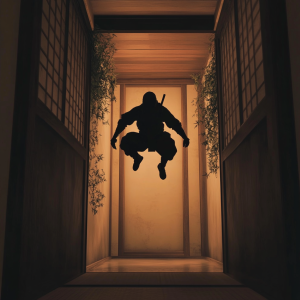
Ninja’s hid in plain sight by hiding high up
4. Furniture Hiding Spots
Furniture offers great, low-profile hiding spots that blend right into your daily setup. Look for unused or hollow spaces in items like sofas, coffee tables, or storage ottomans. Hidden drawers, the inside of a cabinet door, or the base of an armchair are all potential hiding spots. Since these areas look totally ordinary, they’re unlikely to attract attention, especially if they’re covered by everyday items.
5. Hidden Wall Compartments
A hidden wall compartment is another excellent option for those who like DIY projects. Choose a spot that won’t immediately attract attention, like inside a closet or behind a piece of furniture, and install a false panel or compartment for easy access. If the panel blends in with its surroundings, it’s likely to go unnoticed during any kind of inspection.
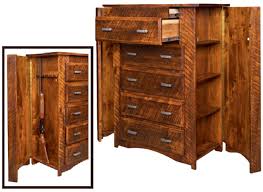
Hidden compartments in furniture
6. The Decoy Gun Strategy
Here’s a clever addition to your strategy: have an old, beat-up firearm to use as a “decoy” in case of forced inspections. This “trashy” gun doesn’t have to be fancy, just convincing enough to serve as the “only” firearm in your possession. When authorities or intruders ask about firearms, bring out the decoy, and don’t forget to put up a fuss about losing it—make it convincing!
This method can save your primary firearms from seizure by shifting attention to the decoy. If they’re convinced this is all you have, they may walk away thinking they’ve found what they’re after. It’s a bit of theater, but in a crisis, it can be a smart way to stay protected.
Stay Secure, Stay Smart
In extreme society-down scenarios, protecting your essentials is just as important as having them in the first place. With a mix of ghost guns, hidden compartments, decoy tactics, and more, you’ll have peace of mind knowing you’re prepared for the unexpected. Remember, being ready isn’t about paranoia; it’s about having the tools and strategies to stay secure, no matter what comes your way.

